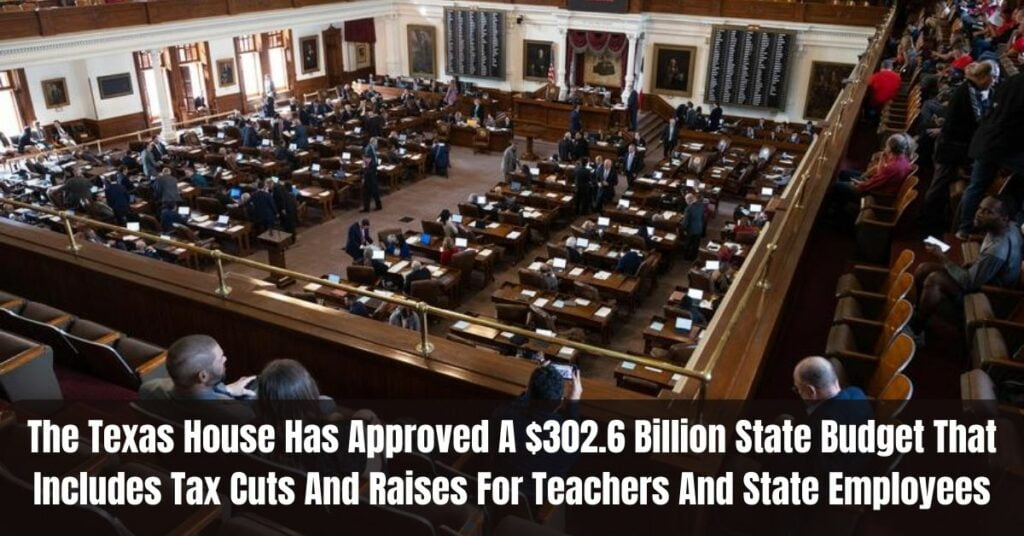The Texas House adopted a historic $302.6 billion state spending plan on Thursday, sending it to the Senate along with a proposal that would increase state employee salaries while also providing millions of residents with more access to mental health care and tax breaks.
The proposal allocates roughly $136.9 billion in general income to some of the top goals of the state GOP leadership for the ensuing two years, including $17.5 billion for property tax reductions, $5 billion in more funding for schools, and $4.6 billion for border security.
The budget plan also makes tens of billions of dollars in unapplied general revenue accessible to them, as the state is already rich with cash after record-breaking tax receipts. This includes a $37.2 billion surplus, which is more than 24 states’ combined budgets.
A small number of Democrats and two Republicans, Reps. Tony Tinderholt of Arlington and Brian Harrison of Midlothian, voted against House Bill 1 in the 136–10 vote that saw it pass.
The Texas House today will hammer out a $302.6 billion proposal for how the state will spend taxpayer dollars over the next two years.
House members have already prefiled nearly 400 amendments that could be debated. Follow along here all day for updates. https://t.co/Q0TacvGi0i
— Texas Tribune (@TexasTribune) April 6, 2023
After a relatively brief and amicable day of debate, chair of the House Appropriations Committee Greg Bonnen said, “I am extremely proud of the work that we’ve done.” This plan makes unprecedented investments in public education, lower property taxes, and infrastructure that is vital to our state.
Read More Latest News:
- Texas 6-year-old Who Went Missing After Her Mother Fled The Country Is Now Regarded As Dead
- 2 Indiana Couples Killed In A Plane Crash Along The Gulf Coast Are Identified By Florida Police
Several senators who opposed the budget plan pointed to issues including inadequate funding for public schools and teachers and a restriction on diversity, equity, and inclusion initiatives as only two of their objections.
Rep. Gina Hinojosa, a Democrat from Austin who served as president of the Austin ISD school board before being elected to the House in 2016, said that she had never voted against a budget during her time in office. For parents, for mothers all around the state who are aware of the dire need for our public schools.
Some Democrats supported the bill because they agreed with certain of its provisions and wished to help such important initiatives. The budget package, according to Austin Democrat and member of the House Appropriations Committee Rep. Donna Howard, contains around $20 billion in increased expenditures.
According to Howard, “I think we need to move forward with it, keep working on it, and make sure we get more that answers the needs of Texas.”
A $14 billion emergency spending bill for the current cycle was also approved by the House on a 147-1 vote. It includes $400 million for flood mitigation projects, $1.6 billion for school safety, $3.5 billion for cost-of-living pension increases for retired teachers, and $1.5 billion for the Texas Semiconductor Innovation Fund.
A party-line vote of 83-65 rejected a proposal to increase Medicaid eligibility under the emergency package, which Democratic backers claimed could give up to 1.5 million Texans access to health insurance.
The conference committee will now seek to resolve the chambers’ disagreements on the emergency spending package.
When a bipartisan group of House members passed a law prohibiting the use of state funds for private school vouchers, it dealt a crushing blow to at least one item on the A-list priorities of Governor Greg Abbott and Lt. Governor Dan Patrick.
The 86-52 House vote on that amendment, taken only hours before the Senate passed a bill that would put such a program into effect, suggested an uphill struggle for the initiative in the House, which has long rejected policies that allow public school monies to be used at private schools.
The discussion over the bill’s clause prohibiting financing for institutions using diversity, equity, and inclusion methods brought passionate remarks in support of diversity from Black, Brown, and White Democrats as well as personal accounts of how they overcame racial obstacles in their own lives.
You can follow us on our Facebook page, if you liked our content.

